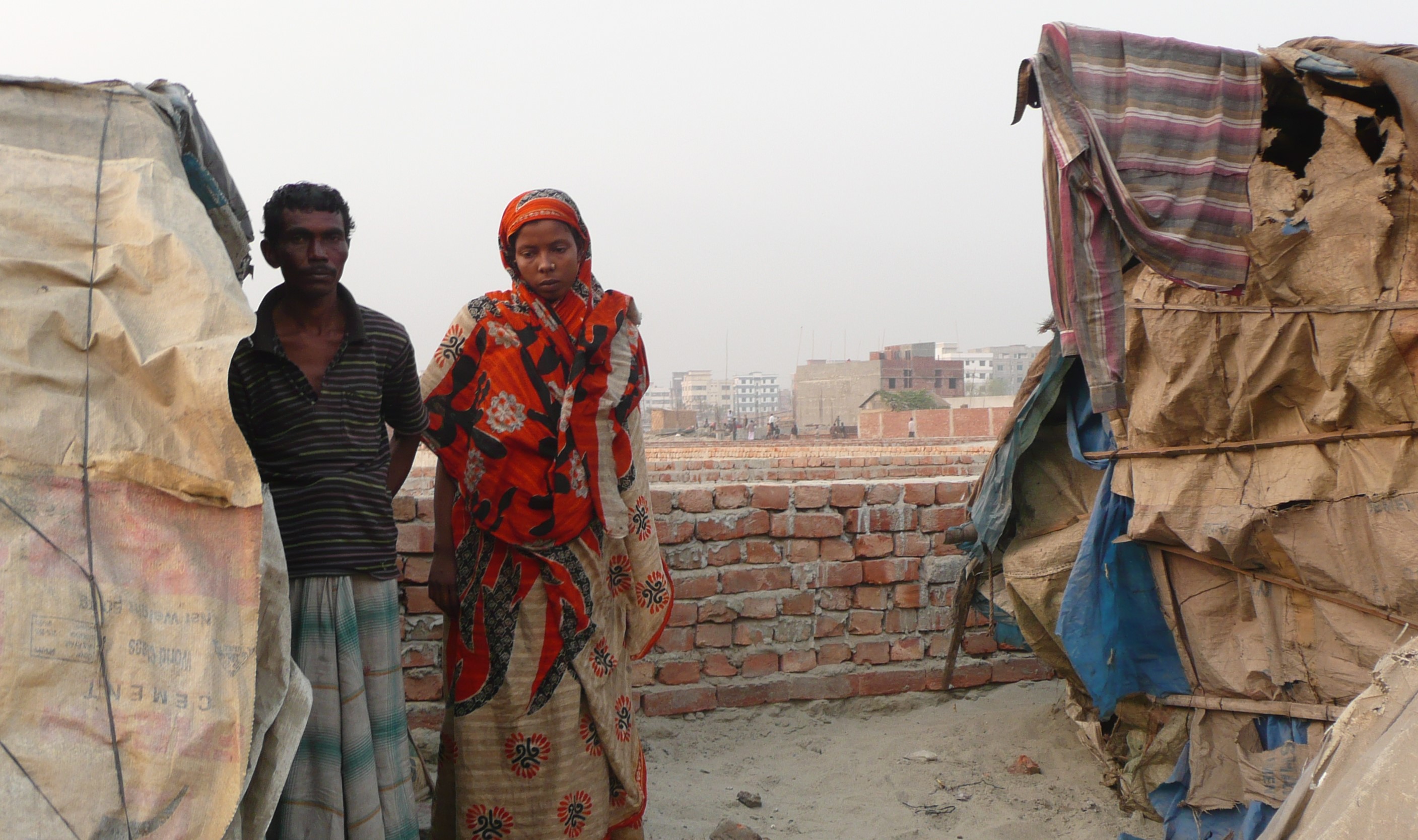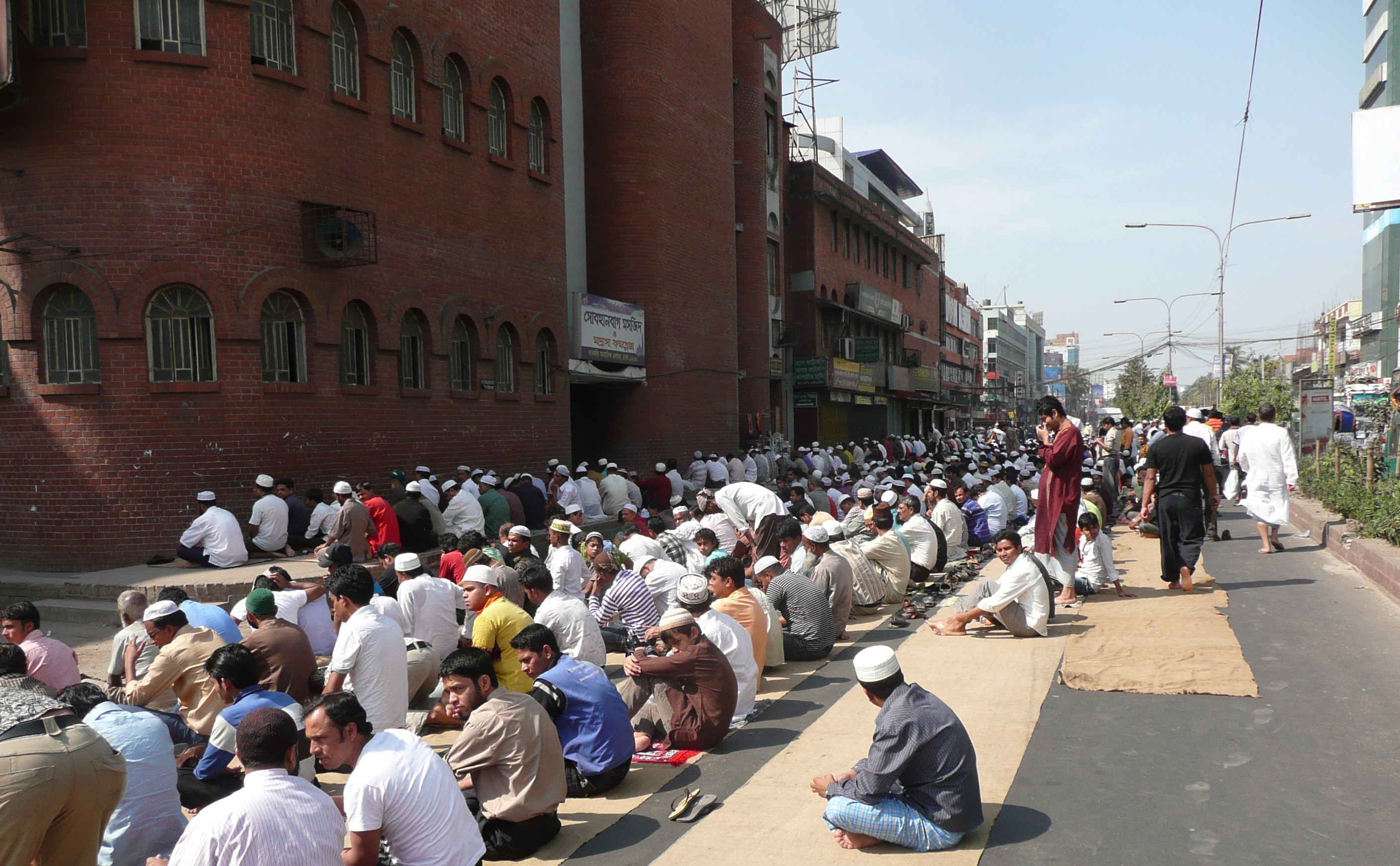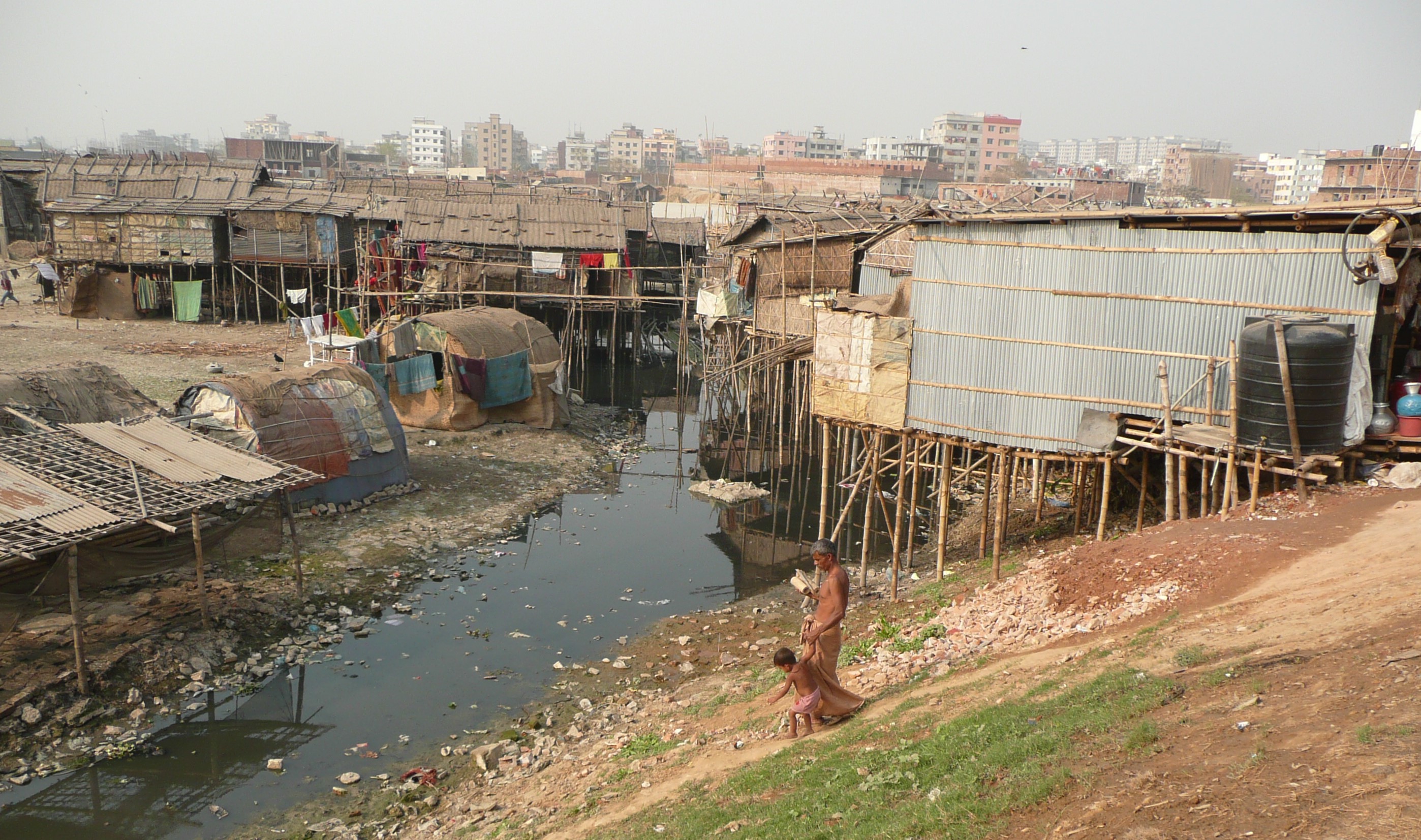The end of the line for climate migrants in Dhaka

Bangladesh is located in one of the regions of the world which has been most deeply affected by climate change: rising sea levels threaten large areas of the coastal regions in the South and cyclones are increasingly robbing hundreds of thousands of people of their livelihoods. In the North, the traditional weather proverbs have lost all relevance.
Over half of the population of Bangladesh depend on agriculture for their livelihoods and it is no longer possible to predict when monsoons or floods will hit, how long they will last and how powerful, and how high, they will be. The local population has done almost nothing to contribute to global heating: its carbon dioxide emissions per capita amount to less than 0.5 tonnes annually, compared to 15 tonnes in Western Europe and as much as 20 tonnes in the United States.
The effects of global heating are a significant factor in domestic migration. Many people are moving to Dhaka, the country’s capital city, to start a new life in the textile industry, on building sites, as waste collectors or rickshaw drivers. According to official numbers, as many as 2,000 people move to the city every day. It’s no wonder that the 14-million strong metropolis is now bursting at the seams.
At Friday prayers, the many hundreds of mosques in Dhaka are unable to accommodate all the worshippers. One lane of Mirpur Road, one of the major streets, is shut as midday approaches. Worshippers then kneel on their mats in long rows, listening to the preacher via huge loudspeakers, performing their prayers in the street.

When the muezzin calls the faithful to prayer at five in the morning, the city’s 12 million inhabitants wake to another hectic day. It also marks the end of the nighttime peace for the city’s many homeless people, who will have only been able to get their heads down on the sides of roads and in nooks and crannies around midnight, because there is no space for them during the day. They swiftly pack away their modest belongings, often little more than a blanket, tin pots and some tools they need for their work as day labourers on one of the city’s countless building sites.
There are large numbers of newcomers among them. They have yet to find anywhere to stay in southern Dhaka, where most of the slums are located. The slum quarters to the south of the Buriganga river, which divides the city into two halves, are also known as 'Asia' by the inhabitants of Dhaka.
Life in the slums
Jahangir Alam lives in Muhammadpur, a district to the west of the centre of Dhaka, i.e. in 'Asia'. The closer you get to the Buriganga river, with its stinking, black water, the poorer the surrounding housing becomes. Bosila is the name given to the cluster of slums where Jahangir Alam and his wife Farida live alongside another 500 families. The wealthier quarters to the orth are known as 'Europe'. The district’s high-rise buildings are enormous and many of them have elevators and large underground parking areas. The large four-wheel drive SUVs are a particular status symbol.
Jahangir Alam and Farida are newcomers and are better off than those who are obliged to spend the night on pavements and the sides of roads. But in contrast to the other huts in the slums, which are built on stilts to protect them from the annual floods, Jahangir and his wife live on a six square-metre patch of ground which can be covered by a plastic tarpaulin in emergencies. Their belongings comprise a couple of blankets, two plastic buckets for fetching water, a basket and a few metal containers.
[embed:render:embedded:node:43288]
They have married off their twelve-year-old daughter in Gazipur, a town to the north of Dhaka because they decided their new 'home' was too dangerous for her. For want of money, they sent their two younger sons away to work: one is an assistant on a large ferry, the other works in a grocer’s in Gazipur. They don’t earn any money, but they do receive free food and lodging. Farida and Jahangir Alam are only able to see their children every three to four months. In their old home on the Bhola peninsula in the delta region of the gigantic River Meghna, the children went to school and lived with their parents.
"I lost my first home twenty years ago when I was working as a fisherman," Alam explains, "Then, three years later, my second home was washed away by the river, and then the same happened to my third home seven months ago." Following the loss of his second home in Bhola, Alam began earning money with a bicycle rickshaw. He’s now pounding the pavements on his rickshaw to make a living in Dhaka.
Dust, smog and sweat
It’s hard work: these three-wheeled vehicles have an area for cargo or seating. It’s intended for two passengers, but sometimes whole families travel by rickshaw. In such cases, Alam, who’s a little on the scrawny side, has to really push himself to the limit to get the vehicle moving. He does earn a little more from his work in Dhaka than he did on the peninsula, but life in the city is much more expensive, too.
"In Dhaka, you have to buy everything – water, for example – but in Bhola, you didn’t have to pay for anything, not for water, nor for the land you lived on, almost everything was free," Alam recalls. He’s not at ease with the number of people or the close quarters that define life in Dhaka. Nor is he happy with the long journeys on dusty roads, through dense smog. "It sometimes takes me two hours to get to the part of the city where I work." In summer, it’s often unbearably hot; there’s no fresh sea breeze like there was on the peninsula. "I sweat like mad when I’m working on the rickshaw – that never happened in Bhola," says Alam.

There’s no privacy in the slums. The closest latrines are half a kilometre away. "It’s a problem particularly for my wife during the day; at night we simply go outside and do our business there." A power plant hums at the heart of Bosila, but the electricity is used by the far-off building complexes inhabited by the middle classes.
In the slums, everything runs on batteries, or sometimes on small generators. Alam has to pay a third of his earnings a month in rent for his little patch, to use the tap a kilometre away and to pay for the latrines. But even this home is under threat. "The landowner wants to build houses here, we’ll have to clear our little huts away."
Cars have priority
"There are ever more cars and buses in Dhaka, they clog up the streets," Alam complains. Sometimes these ‘lords of the streets’ turn violent. "If drivers think we’ve done something wrong, like indicating too late, sometimes they get out of their vehicles and beat us up." Alam fears the worst: "Dhaka will soon be so full of cars that there won’t be room left for us rickshaw drivers."
His fears are not unjustified. Since the late 90s, various corporations, including the World Bank, have supported the development of the traffic system in Dhaka. The traffic system is to be built with cars in mind, despite the fact that 80 percent of the city’s inhabitants travel on foot or by bicycle rickshaw. Rickshaws, as environmentally-friendly as they are, have even been banned from certain major roads in Dhaka.
And the result? Not only does this lead to significant environmental damage caused by exhaust emissions, but the rickshaw drivers’ average income has also dropped by more than 30 percent. "No fuel and many jobs: Sustainable transport" is the motto of the non-governmental organisation which is hoping to rehabilitate rickshaw drivers. This initiative has little chance of success because policy is determined by the wealthy car-owning lobby, promises made to consumers by the advertising industry and the profit expectations of automobile companies.
Jahangir Alam longs to return to his old home. Though he cannot read or write, he knows who is responsible for this long odyssey of his. "The climate is warming thanks to industry and the great number of cars, that’s why the current is stronger, that’s why our country is disappearing," says Alam. He wants to return to his relatives and friends in Bhola. "We didn’t want to make this personal sacrifice, we wanted to stay on our island."
For Jahangir Alam and many others, Dhaka is the end of the line. Continuing the odyssey by fleeing to nearby India has become much more dangerous than it once was. The Indian border guards will shoot at anyone trying to cross the green border. The Indian government also electrified its fences a few years ago. Newspapers in Bangladesh regularly carry stories of those "shot at the border". It happens so often that editors see no need to devote more than a couple of lines to it.
© Qantara.de 2021
Translated from the German by Ayca Turkoglu